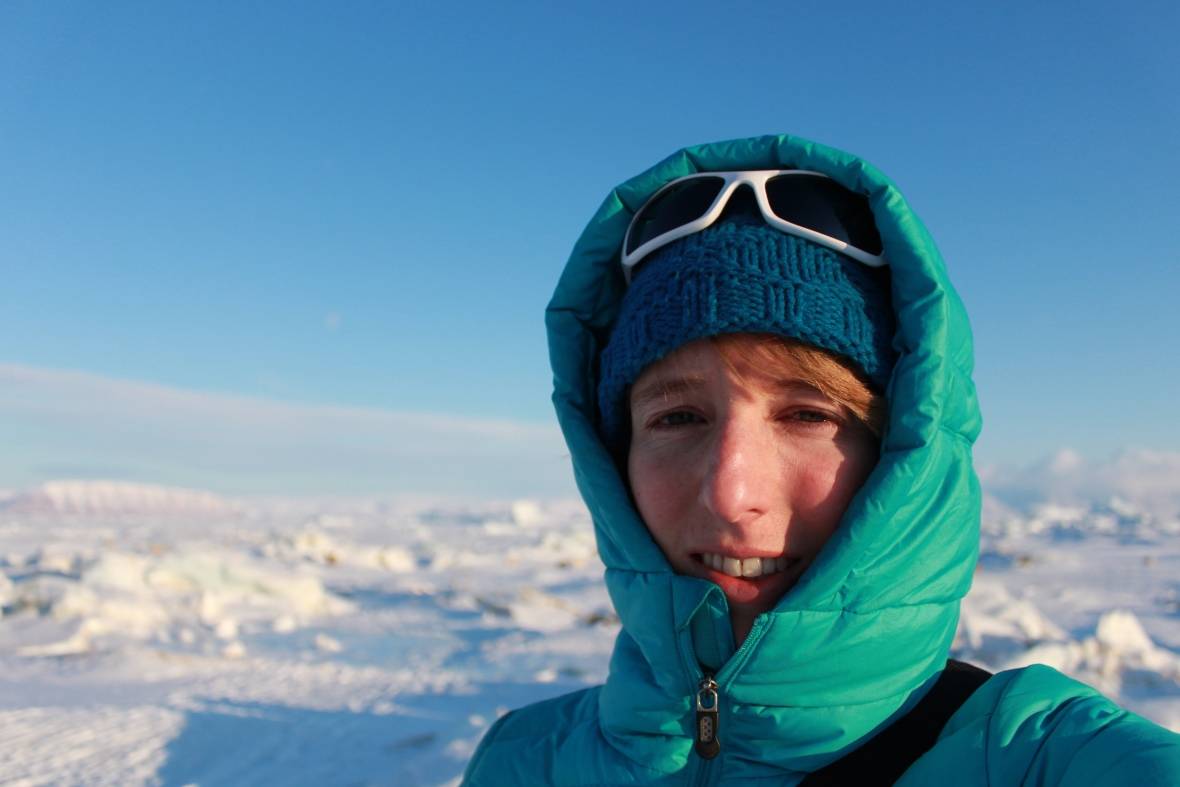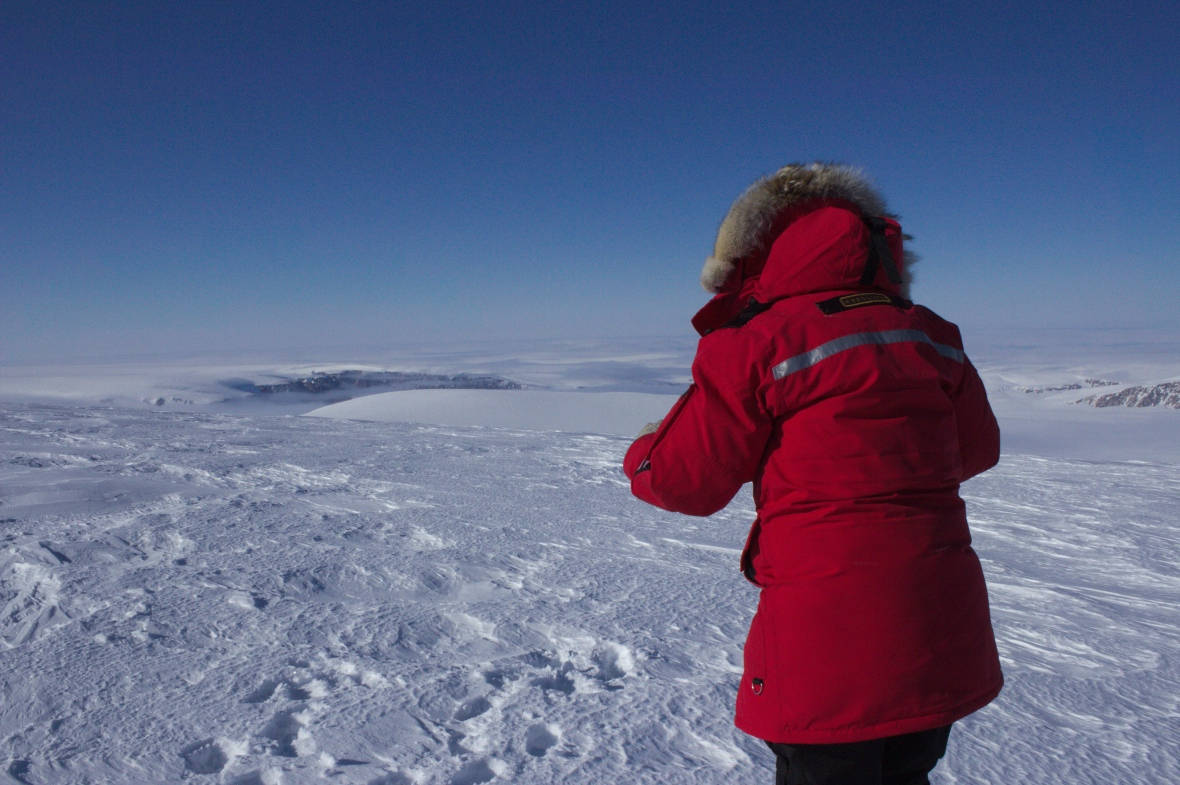Researchers working in the Canadian high north have discovered two super-salty lakes buried deep beneath the Arctic ice. Untouched for thousands of years, the sub-glacial lakes may provide a tantalising glimpse into the kinds of alien life that might exist on Europa and Enceladus, two ice-covered moons in the far reaches of our Solar System.
The scene on top of the Devon Ice Cap in Nunavut, Canada. Some 762.00m below lies a super-salty subglacial lake.Photo: Anja Rutishauser
The two sub-glacial lakes, located at depths of 550 to 750 metres, were detected by researchers from the University of Alberta beneath the Devon Ice Cap in Nunavut, Canada, according to research published this week in Science Advances. Over 400 sub-glacial lakes are known to exist around the world, including many in Greenland and Antarctica, but these are the first to be discovered in Canada and more importantly, they’re the first “hypersaline” lakes to be discovered anywhere on Earth.
Packed with three to four times the amount of salt found in seawater, these lakes remain in a liquid state despite temperatures reaching -18°C.

Anja Rutishauser.
Photo: Kirk Scanlan
Anja Rutishauser, a PhD student at the University of Alberta and a co-author of the new study, accidentally discovered the sub-glacial lakes while conducting a geological survey of the area. Assisted by University of Alberta glaciologist Martin Sharp, University of Texas at Austin geophysicist Don Blankenship, and others, she was able to confirm the presence of a hypersaline subglacial lake complex.
“At first, when I looked at the radar data that indicated that there is sub-glacial water, I was very surprised, and a bit puzzled,” Rutishauser told Gizmodo. “Because of the temperatures below the freezing point at the glacier bed, I did not expect to find liquid water. But once we put all the pieces together with the likely salty rocks underlaying the ice, and the hypersaline nature of the water, I was super excited, because I knew that these lakes are very unique!”
The lakes, which measure about two and three square miles (five and eight square kilometers) in size, aren’t connected to any known sources of meltwater. Excitingly, these super-salty lakes, with their cold, liquid water, are potential hosts for microbial life — and reasonably good approximations of what the conditions might be like on Jupiter’s moon Enceladus.
Both of these moons are covered in ice, and feature vast subterranean liquid oceans. Ideally, scientists will collect water samples from the lakes to determine if microbial life exists down there — a cold environment with no sunlight and practically zero energy.
“In order to access the water in the sub-glacial lakes, we would need to drill through the 550- to 750-meter-thick ice that is overlaying the lakes,” said Rutishauser. “Drilling into a sub-glacial lake has been done successfully at Lake Whillans in Antarctica, so it is certainly possible. Accessing these lakes and sampling the water is definitely our long-term vision. However, this requires a lot of planning, as the extremely cold water temperatures and salinity make it more difficult.”

Anja Rutishauser at work on the Devon Ice Cap.Photo: Alison Criscitiello
Should the researchers do this, they will have to avoid contaminating the water — a challenge that’s not lost on Rutishauser, who says drilling and accessing the sub-glacial lakes will have to be done in a sterile environment using sterile equipment. “The drilling into Lake Whillans was been sterile as well, using filters and UV irradiation,” she told Gizmodo. “If we drill into the Devon sub-glacial lakes, we would do it sterile and make sure to avoid any possible contamination.”
Before that happens, however, this team will partner up with the W. Garfield Weston Foundation to conduct a more detailed airborne geophysical survey this spring, starting in May 2018.
“This survey will help us to investigate the surrounding sub-glacial hydrological conditions of the lakes, derive the full extent of the lakes, and get a better understanding of the surrounding geological context,” said Rutishauser. “We are very excited to have this opportunity and further research these unique sub-glacial lakes.”
